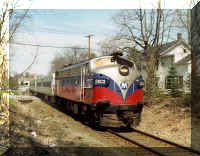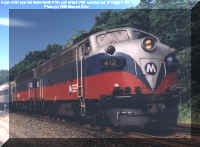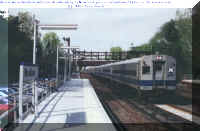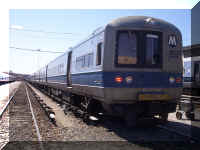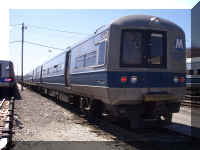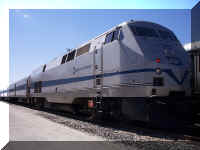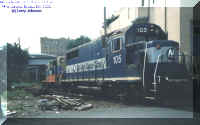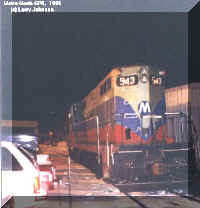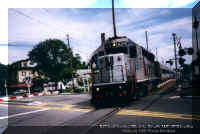Metro-North
operates a wide variety of commuter rail equipment.
| The dual mode FL9 was the workhorse of the Metro-North diesel fleet for many years. While they are being phased into retirement, you can still see them in shuttle service, like this Bernard Ente photo in Pawling, NY. | |
| Annual ridership on Metro-North grew from about 42 million passengers in 1983 to a record 63 million in 1999. To keep pace with this rapid growth, they purchased some old (1946) re-built F3s, re-named as F10s. | |
| In third rail territory, about 20 old ACMU cars were working on their sixth decade of service in 2000. Once very unreliable, they performed capably and were actually sought out by some commuters because of the roomy seats. | |
| The M1a was designed to replace the ACMUs. They operate strictly in third rail territory. | |
| The M3a differs from the M1 with sliding cab windows and traction motor cooling by forced air. A vent on the side of the car differentiates it from the M1. | |
| The FL9 fleet is being replace by modern General Electric P32AC-DM dual mode engines, also called "Genesis Engines". | |
| Freight duties are handled by seven EMD GP35Rs, rebuilt at Juanita by Conrail. They have 2000hp, and no dynamic braking. | |
| Another ancient, but reliable, piece of rolling stock for Metro-North is this GP-8. Seen here in 1995, it is like the Energizer Bunny. | |
| Metro-North also operates service on the west side of the Hudson River to Spring Valley and Port Jervis, New York. Here's a NJT local leaving Hillsdale, NJ enroute to Spring Valley. |






